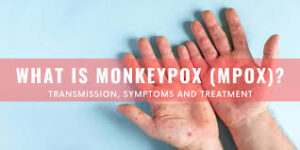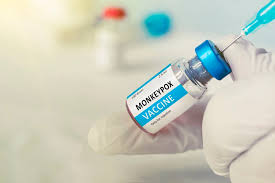Introduction:
After a turbulent year with almost 90,000 cases of the mpox virus and 140 confirmed deaths, the World Health Organization (WHO) made news in May 2023 when it decided to downgrade the disease from its designation as a global health emergency. Previously referred to as monkeypox, mpox quickly spread during the third year of the COVID-19 epidemic, a time when public health awareness was at its highest worldwide. But recent events have raised awareness of the mpox virus once more, and the WHO will issue a warning in December 2023. A thorough summary of the present state of affairs is given in this article, together with the most recent data on mortality rates, sources, symptoms, modes of transmission, available therapies, and vaccination status.

Mpox statistics and recent warnings:
The alarming numbers from the most recent mpox outbreak underscored the seriousness of this infectious disease. There was little relief following the WHO’s initial downgrade in May, which came with nearly 90,000 illnesses and 140 fatalities. The threat is far from gone, based on the organization’s following warning in mid-December. The Democratic Republic of the Congo (DRC), where an alarming increase in sexual transmissions has been noted, is now the center of attention. On December 13, Japan announced the country’s first mpox fatality, underscoring the urgency of a fresh international response.

Current situation in the DRC:
At the hub of the mpox revival, with over 13,000 suspected cases and an outbreak that is fast spreading, is the Democratic Republic of the Congo. Rosamund Lewis, the technical head for mpox at the WHO, voiced concerns about the possibility of additional international transmission from the DRC. With over 1,000 suspected cases reported each month and over 600 deaths, the situation in the nation is terrible. It is crucial to limit the outbreak in the DRC quickly in order to avert a worldwide health emergency.
Modes of Transmission:
Creating effective preventive strategies requires an understanding of how mpox spreads. Although mpox is primarily spread sexually, authorities do not classify it as a sexually transmitted infection (STI). The official recommendation from the WHO emphasizes that intimate contact with an infected individual, such as talking, breathing, and sexual activity, is the primary means of transmission of mpox. Cuts, sores, and contact with mucosal membranes are further ways that the virus might spread, underscoring the significance of hand cleanliness and surface disinfection.
Origins and Discovery of Mpox:
The virus, which was first named monkeypox, was found in 1958 in a Danish laboratory that employed monkeys for research. In 1970, a nine-month-old baby in the Democratic Republic of the Congo became the first known human case. Experts now prefer to designate to it as “mpox” to avoid links with monkeys and to eliminate the myth that it solely affects non-human primates.

Mpox Complications and Symptoms:
Early detection and treatment of mpox require an understanding of its symptoms. A recurring rash, frequently in the form of a blister or sore, that affects the face, palms, soles, groin, genital, and anal areas is a telltale indication. Fever, headaches, sore muscles, low energy, and swollen glands are some other symptoms. In extreme situations, mpox has been connected to bacterial infections that spread to the heart, brain, eyes, and lungs. The percentage of cases that die varies from 0.1% to 10%.

Treatment & Vaccines for Mumps:
At the moment, cowpox, monkeypox, and mpox are all treated with the antiviral drug tecovirimat SIGA. According to the European Medicines Agency, viruses from the orthopoxvirus family are responsible for these diseases. Tecovirimat hinders the virus’s capacity to propagate by interfering with one of its surface proteins. Despite the fact that there are three mpox vaccines that were developed from smallpox research, the WHO does not advise widespread vaccination. Rather, it recommends vaccination for those who are at risk, including as healthcare workers and those who are near to infected patients.
In summary, a thorough grasp of the mpox virus’s causes, routes of transmission, symptoms, treatment options, and preventive measures is crucial for effectively managing the issues it presents. The WHO’s international warnings and the recent reappearance of mpox in the Democratic Republic of the Congo highlight the disease’s continuous threat. To stop the spread of this deadly disease, the international community needs to prioritize public health activities, be alert, and work together. A coordinated and proactive approach is essential as we tackle the intricacies of mpox to protect world health against ever-changing infectious threats.

